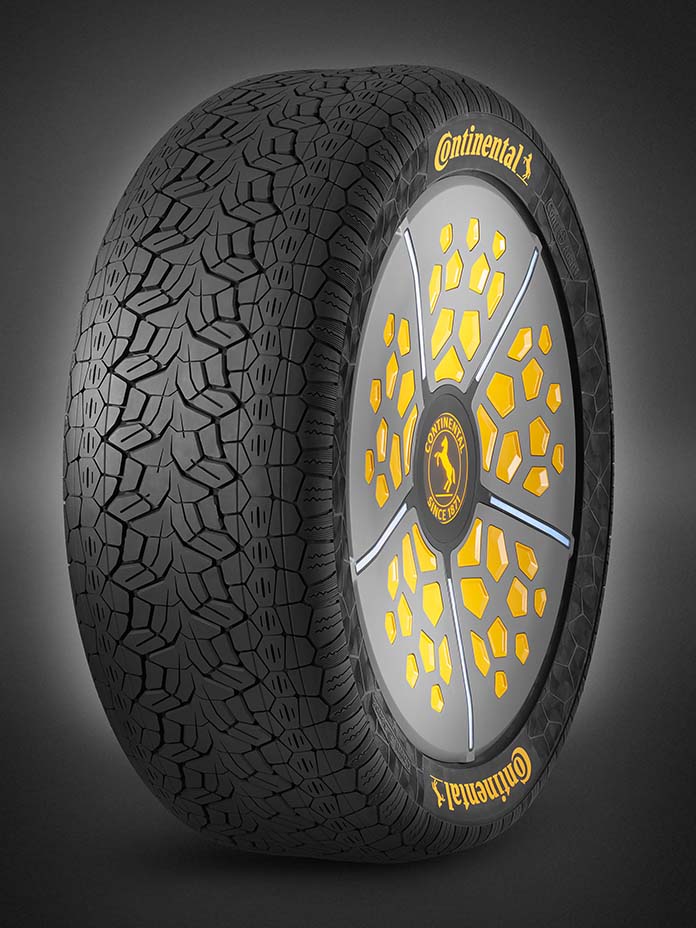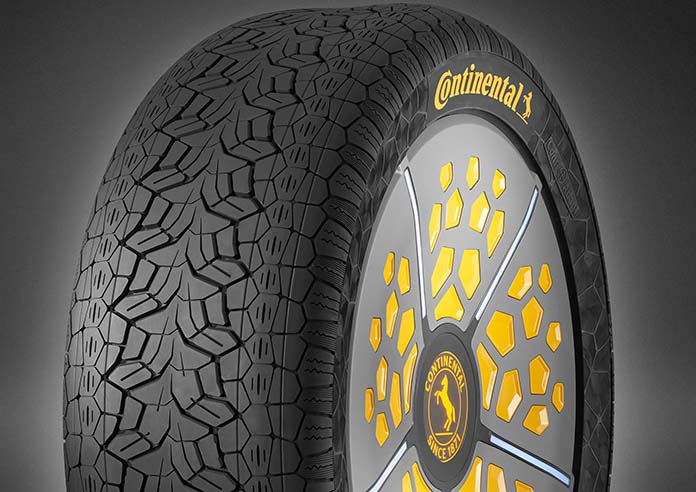I’ve been to Brooklands before – as the world’s first purpose built racing circuit it’s obviously a place that any car enthusiast would want to visit.
Mercedes chose to site their Mercedes-Benz World there – a massive dealership, exhibition space and driving academy right in the heart of Surrey. Unfortunately, the original track has mostly been covered up by development. I got a shock the first time I walked around it and was blocked by a wire fence around a shopping centre. It really upsets me to think of an historical site like this be destroyed by development.
Continental used the venue to launch their latest tyre, the Eco Contact 6. Unfortunately, we didn’t get the chance to drive on the new rubber but significant improvements have been made over its predecessor, surprisingly called the Eco Contact 5.
Most of the improvements come from a new Green Chilli 2.0 compound used in the construction. Careful distribution of the silica in the tyre also contributes to the 15% lower rolling resistance and 20% greater longevity that Continental are claiming over the previous model.
I found it interesting that even though a longer life is being claimed, the tread depth when new is only around 6.8mm, whereas most tyres, including competitor offerings, have 8mm of tread. That might be a hard sell for a tyre dealer and could make their life harder than it needs to be.
There are claims of major improvements in handling, drip and wet and dry braking. Continental are now happy to recommend this Eco tyre even for premium and performance cars, where before they might have recommended one of their more advanced products such as the Sport Contact.
To emphasise this wider suitablility, the tyre comes in a much expanded array of sizes, fitting wheels from 13 to 22 inches and all the way up to 315mm in width, suitable for even the largest SUVs.

The second part of the launch event dealt with the subject of particles created by the process of tyres wearing down and their effects on the environment. A dry subject it must be said. Maybe it would fascinate vacuum cleaner salesmen but personally, it left me cold. Ten minutes in and I was wishing I was anywhere else but sitting in that lecture hall.
Somebody must find the topic interesting though as it made headlines in the tyre press in recent months but it doesn’t seem to have made inroads in the general press.
These particles consist of equal parts tyre rubber with the rest made up of pieces of road material.
So, are these particles causing us any problems? Well nobody seems to know for sure because in order for anything to be done about them, the whole thing needs to be quantified and for that you need a standard way of measuring. That’s a problem because roads are different all around the world, making standards pretty much impossible.
I don’t think we need to worry much, as the particles are heavier than water in any case so they’ll eventually sink. Unlike plastic particles, they don’t appear to have any detrimental health effects on humans or wildlife.
We also got to see the the latest prototypes of ContiSense and ContiAdapt, two Continental technologies that we will probably see on production cars in three to five years.
Contisense is made up a suite of technologies which together remotely transmit tyre data, including pressure, temperature, tread depth and most vital of all, puncture detection.
We already have tyre pressure monitors and puncture detection that works by comparing the rotation speeds of the wheels but this system instantly alerts the driver and car to a breach in the tyre, well before any pressure is lost.
All of this will become increasingly important as we move towards autonomous vehicles. A human driver can often detect when something has gone awry with the tyres from the car’s behaviour but a computer-driven car needs to be explicitly told about the problem. In this case, the tyre’s carcass itself is used as the conduit for the data. It also raises the possibility of the car alerting a nearby tyre dealer, checking that they have the correct tyre in stock and automatically directing the driver there for a fast repair. Clever stuff.
Contiadapt is even more clever as it uses hydraulic rams fitted into a special wheel to vary the rim width depending on requirements. To accommodate changes in tyre pressures as the wheel width varies, a compressor is also fitted.
For example, for maximum efficiency, the tyre would be inflated fully with a wide rim width, resulting in the least movement of the tyre. The resulting footprint would be wide but very short. For wet performance, you’d reduce the rim width to produce a smaller footprint but with more pressure on the road, water dispersal is greatly enhanced and the risk of hydroplaning is lessened. There’s even a traction mode, which lowers the tyre pressure to produce the largest footprint of all, bringing extra tyre treads into the equation.
All of this would happen automatically without intervention from the driver and while the technology is still some way off, we’ll see it sometime in the next decade.










